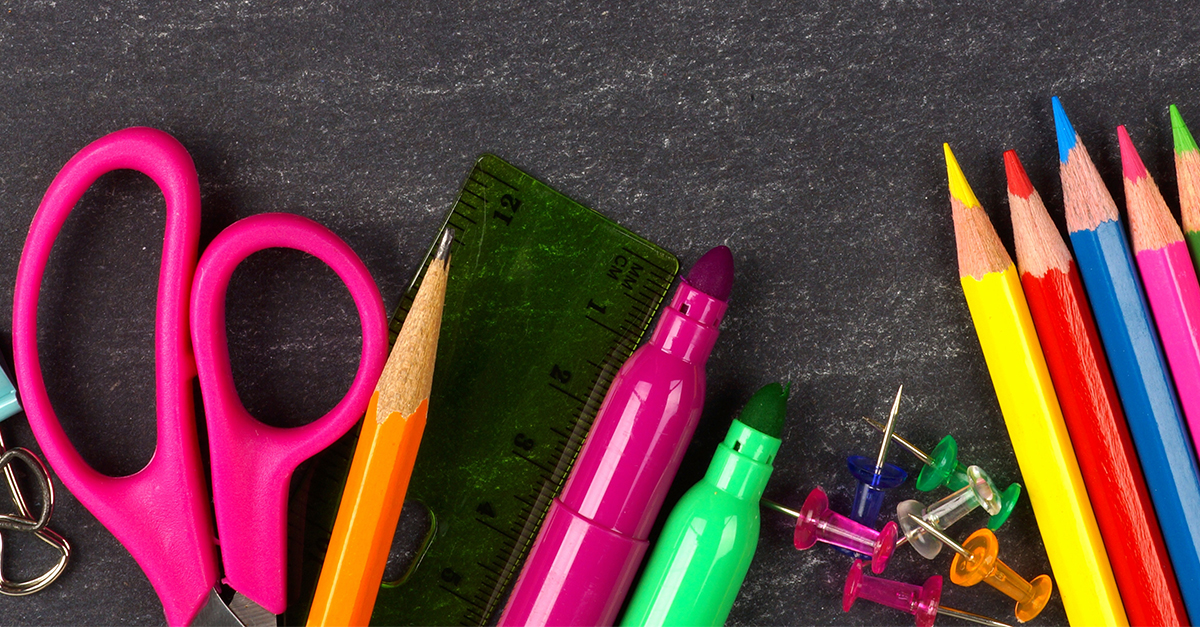
If you’re just starting with homeschooling, you’ve likely worked tirelessly to prepare everything for the journey ahead. You’ve researched laws, purchased curricula, set goals, and now you’re ready to set up a homeschool room!
While figuring out what you need for a homeschool room can seem overwhelming, it shouldn’t be. Your at-home learning space doesn’t have to be perfect to be effective—it just needs to have the basics covered!
Need some help getting started? Here are six tips for setting up a simple, practical homeschool room that promotes learning.
6 Homeschool Room Ideas
1) Designate a Learning Space
No, we’re not saying you need a full-blown classroom in your house, but you should have some dedicated area for schooling. Whether it’s an extra bedroom, the corner of your living room, or even your dining room table, having a consistent space will help your child focus on schoolwork instead of other household activities.
Before you decide on a space, consider how you plan to spend your days while homeschooling. For example, suppose you’re splitting your time between instructing and working or caring for other children. In that case, you should ensure your homeschool room is conveniently located for everything you need to do.
The age of your student will also play a factor in this decision. For example, having your homeschool room in an upstairs bedroom might not be the best decision for a six-year-old if you also care for an infant downstairs. However, it would likely be fine for a 13-year-old.
2) Decide on Furniture
Once you determine the location of your learning space, you’ll have to decide what furniture you’ll need. The type and amount of furniture you choose will depend on several factors, such as the number of children you’re planning to homeschool, the ages of your children, and the size of your space. Generally speaking, you’ll need the following furniture items for homeschooling:
- A spacious table or desk to work at
- Comfortable chairs for prolonged sitting
- Cabinets or shelves to store books and supplies
- A whiteboard or chalkboard to write problems and brainstorm
3) Add Lighting
Next, make sure that your homeschool room has adequate lighting. We suggest maximizing natural light whenever possible, as multiple studies have shown that sunlight exposure can increase academic performance and improve moods. You’ll also need overhead lighting or task lamps to keep your schooling space well-lit on dreary days and reduce eye strain.

4) Gather Your Supplies
Now that you have your space and furniture, you can start buying and organizing your school supplies. Before you purchase anything, though, we recommend reading the instructor manuals for each curriculum to see what supplies are needed. Next, go around your house and gather anything you already own. Then you can purchase whatever is left on your list.
Once you have what you need, put everything in specific spots so that you and your child always know where to find something and return it after use. You may also consider providing each child with a portable organizer for their supplies, like a milk crate, so they can easily transport everything if you choose to do schoolwork outside, at a relative’s house, or even on vacation.
5) Limit Distractions
To maintain your child’s attention while teaching, you’ll need to minimize distractions in your homeschool room—especially for younger students. Here are some suggestions for limiting distractions in your learning space:
- Avoid doing schoolwork near a TV unless necessary
- Keep cell phones out of the area or tucked away
- Reduce clutter by only keeping essential items in the room
- Limit the number of toys in the room and rotate them out regularly
6) Don’t Forget to Decorate
Your homeschool room should motivate your child and get them excited to learn! So, give your space a special touch by adding some decor. Put up some encouraging and educational posters, charts, or maps, and consider getting a bulletin board to display projects and artwork.
We recommend involving your child by letting them pick out decor. You can even make some decorations as a family—just be careful not to go overboard to the point that it becomes distracting.
You don’t have to have a pristine, Pinterest-worthy space to have a successful homeschooling experience. Sometimes simple is best. Remember: your children’s needs will change over time, and you’ll need to adjust your homeschool space accordingly. So, hold your expectations loosely and adopt a mindset of progress over perfection. Your children will guide you on this journey.




I am not ready for the school year to start yet.